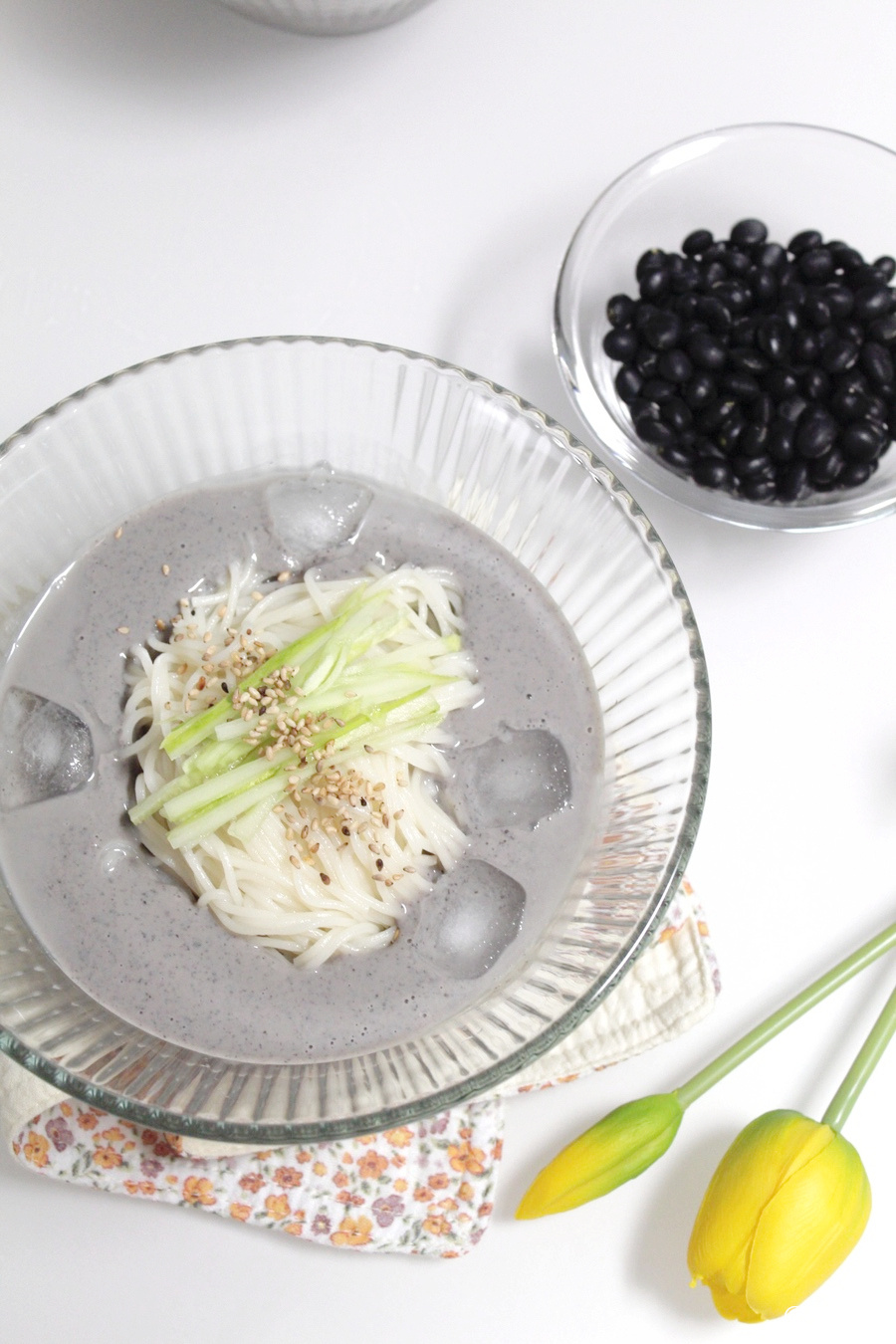Summer Delight: Rich & Nutty Seoritae Bean Noodle Soup Recipe
How to Make Seoritae Bean Noodle Soup at Home: A Complete Guide to Boiling Beans, Making Bean Broth, and Cooking Noodles

The season for refreshing bowls of Kongguksu, a must-have summer dish, is here! Especially, Kongguksu made with seoritae beans is a perfect, satisfying meal packed with protein. It’s also very popular among those who are dieting. In this recipe, we’ll guide you step-by-step through making delicious Seoritae Kongguksu from scratch, starting with preparing the seoritae bean broth and cooking the chewy noodles. Soaking the beans the night before will significantly shorten your preparation time for the bean broth! Follow along with our detailed instructions, and you’ll be able to enjoy restaurant-quality, deep, and savory Kongguksu right in your own kitchen!
Kongguksu Ingredients- Seoritae bean broth, as needed
- 180g somen noodles (per serving)
- Cucumber, thinly sliced (for garnish)
- Sesame seeds, for garnish
- Salt, to taste
Seoritae Bean Broth Ingredients- 1.5 cups seoritae beans (approx. 150g)
- 3 cups water (for boiling beans)
- 1/2 Tbsp salt (for bean broth seasoning)
- A few walnuts (for enhanced flavor, optional)
- 1.5 cups seoritae beans (approx. 150g)
- 3 cups water (for boiling beans)
- 1/2 Tbsp salt (for bean broth seasoning)
- A few walnuts (for enhanced flavor, optional)
Cooking Instructions
Step 1
First, prepare 1.5 cups of seoritae beans for making the bean broth. Remove any broken or spoiled beans to ensure a clean-tasting broth.

Step 2
Rinse the prepared seoritae beans thoroughly under cold water. Since we’ll be using the bean boiling water directly for the broth, it’s crucial to wash them meticulously to remove any dirt or debris.

Step 3
Place the washed seoritae beans in a bowl and add 3 cups of filtered water, about double the volume of the beans. Let them soak in a cool place or in the refrigerator for 6 to 12 hours. (Tip: Soaking the beans the night before allows you to start cooking the next morning, saving precious time.)

Step 4
The next day, you’ll see that the seoritae beans have plumped up considerably after soaking. Their volume should have increased by about 2 to 3 times.

Step 5
Now it’s time to boil the beans. Transfer the soaked seoritae beans to a pot and add the soaking water. If the water level is too low, add more filtered water until the beans are submerged.

Step 6
As the beans come to a boil, skim off any foam that rises to the surface. Removing this foam helps eliminate any unwanted flavors and results in a cleaner, more refined taste for the broth.

Step 7
Once the water is at a rolling boil, reduce the heat to medium-low, cover the pot, and let the beans simmer for about 10 minutes. It’s important to check the tenderness of the beans so they aren’t too mushy or undercooked. After 10 minutes, take out a bean and taste it. Adjust the cooking time according to your preference. (Tip: If the beans are too mushy, the Kongguksu might be thick and pasty. If they are undercooked, they might have a raw, bean-like flavor.)

Step 8
Drain the tender, cooked seoritae beans in a colander and let them cool slightly. You can let them cool in the pot, but if you’re short on time, transferring them to a wider tray or colander will speed up the cooling process.

Step 9
Gather the slightly cooled seoritae beans, the bean boiling water, 1/2 tablespoon of salt, and a few walnuts for added richness. Add more filtered water if needed to achieve your desired broth consistency. (Tip: You can substitute walnuts with peanuts or almonds, or add a small amount of peanut butter for an even deeper flavor.) Place all the prepared ingredients into a blender and blend until smooth.

Step 10
The blended seoritae bean broth will yield approximately 1.5 liters. This broth can be stored in the refrigerator and enjoyed chilled on its own – it’s delicious! Now, let’s use this rich and nutty broth to make Kongguksu.

Step 11
In a pot, bring water and a pinch of salt to a boil. Add 180g of somen noodles. (Typically, 90g is considered one serving, but you can adjust the amount to your liking.)

Step 12
As the noodles start to boil and threaten to overflow, add about half a cup of cold water. Repeat this step 4 to 5 times. This process helps cook the noodles perfectly while maintaining a chewy texture. When in doubt, taste a strand to check for doneness.

Step 13
Drain the perfectly cooked somen noodles in a colander. Rinse them thoroughly under cold running water to remove excess starch. This step enhances their chewy texture and prevents them from becoming sticky or clumpy. Squeeze out any excess water from the rinsed noodles.

Step 14
Place the noodles in a serving bowl. Pour a generous amount of the chilled seoritae bean broth over the noodles. For garnish, thinly slice some cucumber and arrange it on top. Add a few ice cubes for extra coolness, and sprinkle with sesame seeds to finish. Your delicious Seoritae Kongguksu is ready to be enjoyed!



